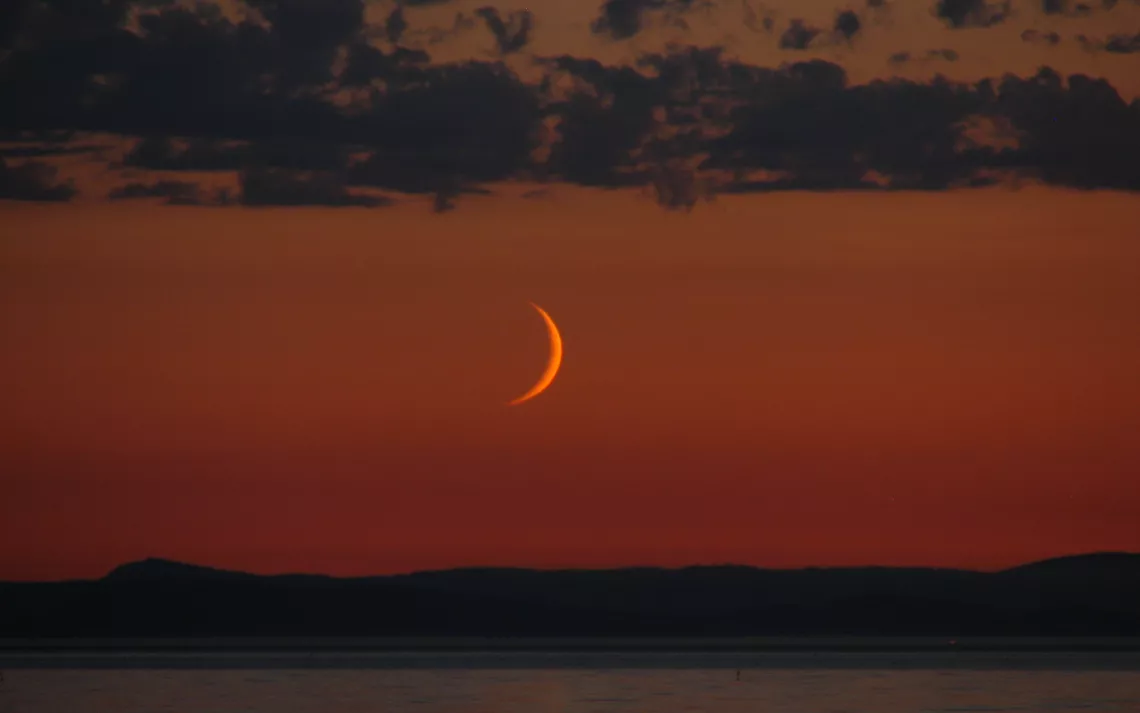May Observing Highlights
All five of the classical planets will shine this month (no telescope required).

A crescent moon in the warm sunset glow. | Photo by Amanda Rynes
All five of the classical planets—the ones known since the ancients and that don’t require a telescope to see—will appear in the nighttime sky in May. Mars and Mercury allow only a short window for viewing because they are near the western horizon and set soon after the sun.
In the beginning of May, Mars is already getting close to the sun and is difficult to see just after sunset. Mercury has been climbing toward bright Venus above, but around May 11 it starts to fall back toward the sun and Mars.
On May 15, all five of the classical planets appear above the horizon at one time, but are extremely difficult to spot. Mars is right at the west-northwestern horizon after the sun has set and the sky is still getting dark. Mercury is a little higher up; above it is Venus (the easiest to see in the growing darkness), and then Jupiter. On the far east-southeastern horizon Saturn has just risen. Any hills or trees on the horizons could block your view of Mars and Saturn, on opposite sides of the sky and just skimming the earth.
On May 19 you may be able to spot a young crescent moon just to the left of Mercury. The next night will give you a better view, however, as the moon grows in size and heads toward Venus. On May 21, the moon and Venus are about the same distance above the horizon, and the two stars shining above Venus are Castor and Pollux, the twins in Gemini. On May 23, Jupiter and the moon become the picturesque pair for the evening.
Meanwhile, in the east, Saturn rises around midevening at the beginning of May, but it arrives a little earlier each subsequent night. By the end of the month it appears two hours earlier, before the sun has even set. The moon leapfrogs Saturn from May 4 to 5, when it is just past full phase. Saturn ascends near the edge of the constellation Scorpius, which carries the summer Milky Way up from the horizon.
The full moon shines on May 3 at 8:42 p.m. PDT, about halfway between the star Spica and Saturn. On May 9, Venus is less than two degrees from the star cluster M35. Use a pair of binoculars to focus on Venus and then look just to the lower left of Venus to find a magnitude-5 patch of stars at the foot of Gemini.
 The Magazine of The Sierra Club
The Magazine of The Sierra Club







